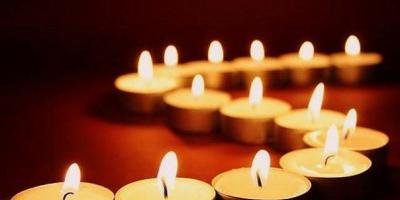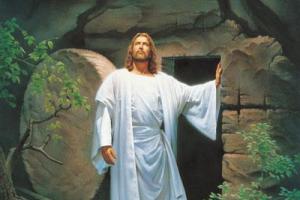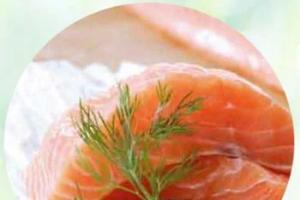On September 9-12, 2011, the Harvest festival took place on Alex James's farm - Hit The Floor magazine (HTF) talks about this significant event.
This Friday, on a sunny but windy day, Alex James announced the opening of an annual festival called Harvest. The bassist was very good in the role of host of the festival, as well as in all his endeavors, which include: cheese production, songwriting and, of course, participation in one of the most influential bands of our time - Blur.
This festival usually takes place in Ipswich, on the land of another famous farmer, Jimmy Dorety, but this year Alex decided to get directly involved in the HARVEST celebrations and opened his farm in Oxfordshire to festival guests, not only for good Music, but also for another passion Alexa - good food.
Musical acts such as The Kooks, KT Tunstall, The Feeling, Athlete, The Futureheads and Benjamin Francis Leftwich (to name just a few) performed throughout the three festival days. Also at the event were chefs, masters of their craft - Hugh Fearnley-Whittingstole, Tommy Myers and Rachel Allen, who demonstrated their culinary skills and conducted master classes.
HARVEST is a holiday for the whole family, many came with their children, who were entertained by Mr. Tumbel (the hero of the children's television show "Something Special") and the heroes of the children's story "Guffalo". Children could also take part in various competitions, culinary and dance competitions. Another plus for parents with young children: they could leave their child in the children’s room for several hours, under the supervision of experienced nannies.

But this year, HARVEST felt more like a "middle class" festival than what it had been before. He was visited by David Cameron with his wife Samantha and children. As well as the Prime Minister, other famous Chapping Norton residents such as Jeremy Clarkson, Marianne Frostrup and Harry Enfield were also spotted. Many festival-goers look much happier sipping champagne and snacking on free cheese and pork canapés rather than beer and hamburgers - the traditional food at all festivals!
“I don’t think anyone else has tried to do something like this; Alex James was the driving force behind the festival as it embraced his two passions - music (see his fantastic career with Blur) as well as his interest in food and local produce. The combination of food and music is great, and there's a lot of different activities for children,” says Mr Cameron, sitting in front of the main stage on a straw bale, part of the structure designed as a children's labyrinth. “Twenty years ago no one could have imagined that today the Harvest Festival would become a very important part of Britain” (bbc.co.uk)
All I can add is that Alex James was a great host, spending most of his time chatting with fans and asking if they were having a good time. His cheese stall proved to be an extremely popular place, with a queue lasting all day long as people patiently waited in line to try some of his famous cheeses, such as Blue Monday (named after his favorite New Order song).

As the sun set, many of the children seemed to disappear (most likely they were frolicking in the children's room) and the festival took over with nightlife, everyone enjoying the pleasant atmosphere - drinking, socializing and dancing the night away.
The Kooks were without a doubt the highlight of the evening. The Brighton quartet played an amazing selection of songs including their greatest hits along with their new versions, all of which were incredibly well received by the audience.
All this filled the festival with an atmosphere that was much needed after a whole summer of parties and a general lack of sleep. HTF might have liked to see a little more entertainment for the kids, and perhaps there will be some music-related additions to the festival next year (there was a point where we started to get the impression that people were choosing Food over Music), but we spent only a day at the festival, and thus missed many of the interesting things planned for Sunday.
Overall it was a great family event with a friendly staff that we expect will continue to grow year on year and HTF will be looking forward to next year when we can come back and see what Mr James has in store at HARVEST 2012 .
Speaking at the closing of the festival, organizer Alex James said: “It was a fantastic weekend. I'm delighted that we have welcomed so many people to our farm to enjoy the best Food and Music in the UK."
09/10/2011, Hit The Floor magazine (HTF), Julie Alford
Early English settlers took the idea of harvest thanksgiving to North America. The most famous one is the Thanksgiving harvest held by the Pilgrims in 1621.
Nowadays the festival is held at the end of harvest, which varies in different parts of Britain. Sometimes neighboring churches will set the Harvest Festival on different Sundays so that people can attend each other's thanksgivings.
Until the 20th century most farmers celebrated the end of the harvest with a big meal called the harvest supper, to which all who had helped in the harvest were invited. It was sometimes known as a "Mell-supper", after the last patch of corn or wheat standing in the fields which was known as the "Mell" or "Neck". Cutting it signified the end of the work of harvest and the beginning of the feast. There seems to have been a feeling that it was bad luck to be the person to cut the last stand of corn. The farmer and his workers would race against the harvesters on other farms to be first to complete the harvest, shouting to announce they had finished. In some counties the last stand of corn would be cut by the workers throwing their sickles at it until it was all down, in others the reapers would take it in turns to be blindfolded and sweep a scythe to and fro until all of the Mell was cut down.
Some churches and villages still have a Harvest Supper. The modern British tradition of celebrating Harvest Festival in churches began in 1843, when the Reverend Robert Hawker invited parishioners to a special thanksgiving service at his church at Morwenstow in Cornwall. Victorian hymns such as We plough the fields and scatter, for whom growing crops of sufficient quality and quantity remains a struggle. Development and Relief organizations often produce resources for use in churches at harvest time which promote their own concerns for those in need across the globe.
In the early days, there were ceremonies and rituals at the beginning as well as at the end of the harvest.
Encyclopædia Britannica traces the origins to "the animistic belief in the corn spirit or corn mother." In some regions the farmers believed that a spirit resided in the last sheaf of grain to be harvested. To chase out the spirit, they beat the grain to the ground. Elsewhere they wove some blades of the cereal into a "corn dolly" that they kept safe for "luck" until seed-sowing the following year. [ ] Then they plowed the ears of grain back into the soil in hopes that this would bless the new crop.
- Church bells could be heard on each day of the harvest.
- A corn dolly was made from the last sheaf of corn harvested. The corn dolly often had a place of honor at the banquet table, and was kept until the following spring.
- In Cornwall, the ceremony of Crying The Neck was practiced. Today it is still re-enacted annually by The Old Cornwall Society.
- The horse, bringing the last cart load, was decorated with garlands of flowers and colorful ribbons.
- A magnificent Harvest feast was held at the farmer's house and games played to celebrate the end of the harvest.
- Harvest is celebrated by many people. It is widely looked at in schools, and focused on in a few churches, especially country churches where the people are more closely tied to the land. Urban churches are less likely to celebrate the harvest, since they are not close to the land and many consider celebrating the harvest a carryover from paganism.
- Harvest is associated with fruits and vegetables that are gathered yearly to provide food to last people through the winter, for which they give thanks. The Harvest Festival is held to celebrate that the hard work of the harvest is over for another year.
The harvest festival could be considered open: the field work was completed, the harvest was completed, the grain was exported, the flax was harvested. The foundation of the family’s well-being for the next year has been laid, which means we need to thank the gods for the harvest and their generosity. According to Eastern tradition, as a sign of gratitude, people lit colorful paper lanterns on the shore, then lowered them into the water and let them float with the flow, thus making a sacrifice to the gods.
Board game Lanterns. The harvest festival will invite you not just to observe this tradition, but to participate in it, lowering multi-colored lanterns onto the water surface so that they form beautiful and colorful patterns.
Flashlights. Harvest Festival: where to start the celebration?
The cardboard cards (tiles) depict patterns of lanterns, conventionally divided into four parts of different colors (red, white, yellow, and so on). At the beginning of the game, a starting tile is placed in the center of the table and players receive a card of the color that is opposite them. Players also receive several cards (tiles) from a common deck, so that they can then lay them out in turn. So it turns out that no matter who places a tile on the table on their turn, everyone, without exception, replenishes their collections with multi-colored lanterns according to the principle: the color you look at each other with is yours.
Feature of the game Flashlights. The thing about Lanterns: The Harvest Festival is that you'll have to keep an eye on not only your lanterns, but also the lanterns of your opponents. If you see that one of your opponents needs a specific color and the tile you laid can give him that color, it is better to refuse it, even if in this case you sacrifice your benefit.
The main task of the participants in the game Flashlights. Lanterns: The Harvest Festival – collect as many combinations as possible from the received multi-colored lanterns. Players are awarded honor cards (tokens), and collected combinations are discarded. Another feature of the game is that each new token brings fewer points than the previous one, which means that participants need to make every effort at the very beginning of the game, so to speak, to rush from the start.
Harvest Festival: The whole table is covered in colorful lanterns!
If you want to add some color to your life, then you should definitely buy the game Lanterns. Harvest Festival. Just one batch and it’s like you’ve really gone to China to admire how the locals celebrate the Mid-Autumn Festival.
EQUIPMENT:
– 56 cards
– 30 pattern tokens
– 36 lake tiles
– 20 reward tokens
– 1 starting player marker
- rules of the game
In the Middle Ages, various holidays were often held, which have survived to this day. People burned straw effigy, harvested all their crops for sale, milked their cattle, and much more. A mod called "Harvest Festival" will add crops to Minecraft, animals that need to be fed and cared for, new NPCs (mobs), a builder who will help you build your own city for people to live in, and much more.
You can also cook various dishes from the grains you collect, or mine minerals in the mine. In order to start farming, you must call upon the harvest goddess. For this you need to use any flower. As soon as you call her, you will be given a training task with which you will learn all the delights of agriculture. This mod also adds seasons, which have their own duration and will replace each other; 13 Crops You'll Need to Water to Grow; livestock, including cows, chickens, chickens and sheep; builder; interaction with NPS and much more. Let's move on to the screenshots.
Screenshots:




The annual harvest festival, the autumn festival of the Åland Islands, is just around the corner. Many exciting adventures await you outside the doors of Åland farms. The Harvest Festival is a folk festival that will bring autumn colors into your life and give you the opportunity to visit the Åland countryside - visit farms, get to know rural life and the food we eat and, of course, taste the locally produced products available in autumn season! Welcome to the harvest festival, try a piece of rural life!
Food and meetings in the countryside
Book September 21-23 in your calendar for an amazing trip to the Alan Harvest Festival. This autumn festival is the heart of Åland's food culture. During these wonderful September days, Åland will show you bright autumn days, cozy dark evenings with Open farms, temporary events Plåpp Åpp And Harvest Festival Restaurants in a delightful mix of agriculture, food producers and local artisans.
Come and experience Åland rural life during the peak harvest season. Visit different farms, taste seasonal vegetables and fruits where they were grown, meet producers, meet friends and don't miss the opportunity to take home locally produced products and goods. Don't forget to take a thermos bag with you.
Open Farms will offer a variety of activities, events and local products on Friday and Saturday from 11 am to 8 pm and Sunday from 11 am to 5 pm. Many farms organize children's activities for the whole family. Children can jump in the fragrant straw, pet the village animals, play in the sandpit, look for treasures, ride a tractor and take part in a jumping horse competition.
The category Plåpp Åpp, the Åland interpretation of the pop-up phenomenon, refers to events that appear unexpectedly. In this category you will find temporary program items that appear here and there in different places. The purpose of such events is to show the visitor the daily life and work of farmers.
At the harvest festival there are many opportunities to enjoy a delicious lunch of Ålandic dishes. Harvest festival restaurants have joined the Åland food manifesto and offer menus based on local, seasonal produce. At the Arkipelag Hotel you can start the day with an Åland breakfast, which is offered to all visitors, not just hotel guests. Breakfast must be ordered in advance by calling +358 18 24020.
Music, dancing and karaoke
As darkness falls, it's time to swap out your wellies for dancing shoes and enjoy live music and dancing.
Dairy farm Mattas Gårdsmejeri is organizing a country dance in the hayloft of its barn on Saturday 22 September. The Högtryck band plays live music from 9 pm to 1 am. The room can accommodate only 150 people, so reserve your seats in advance: Jennifer (tel. +358 4573425844) and Lars-Johan (tel. +358 4570529806) or by email. mail [email protected](price 15 €/person).
Restaurant Bastö Bykrog will host karaoke competitions, after which there will be dancing to the fiery music of the group Yellow spaces from 9 to 12 pm. Use this opportunity to eat delicious food and listen to live music And light up the dance floor. And if you want to show off your vocals, sing karaoke from 11:30 to 18:00 or take part in a karaoke competition from 18:00 to 21:00. I won the opportunity to perform with Karina Sommarström and her band Yellow spaces. Did you know that you can book a stay at the Bastö Hotel?
Visit the Harvest Festival website (in Swedish) for more information about the festival, farms and events. Plan your trip by selecting your favorite farms, activities, and restaurants!
Bus excursions
Don't have your own car or the ability to travel by car? On Saturday 22 September 2018 you can take the Williams bus to some of the Harvest Festival farms. The cost of the excursion is 15 €/person. roundtrip. Free for children under 6 years old. No pre-booking required, payment in cash on the bus.
Discount card
The new discount card is an opportunity to receive exclusive offers, discounts and participate in a drawing. With a discount card you get access to unique Harvest Festival offers and participation in a prize draw for Harvest Festival participants and its sponsors.
The discount card is optional and is not tied to your vehicle. By purchasing a discount card (information only in Swedish) you will support Åland agricultural work and the association Friends of the Harvest Festival. Farms will receive 25% of the profits from the sale of discount cards and will be able to pay for the work of parking guards, which is a contribution to the safety, quality and organization of the Harvest Festival.
You can purchase a Discount Card on our website, at the Åland Tourist Information Office at Storagatan 8, using the Kloink mobile application, in open farms and in some shops. Members of the Friends of the Harvest Festival are entitled to a free discount card.
Friends of the Harvest Festival Association
Once the Harvest Festival is over, you can extend the holiday feeling and autumn experience by joining (info in Swedish only) the Association of Friends of the Harvest Festival, which organizes the festival. Events are organized for members of the association all year round. The association organizes exciting trips and plays out fun farm activities - for example, you can shear sheep, milk cows, feed calves or stroll through an apple orchard one fine spring evening. Welcome!








